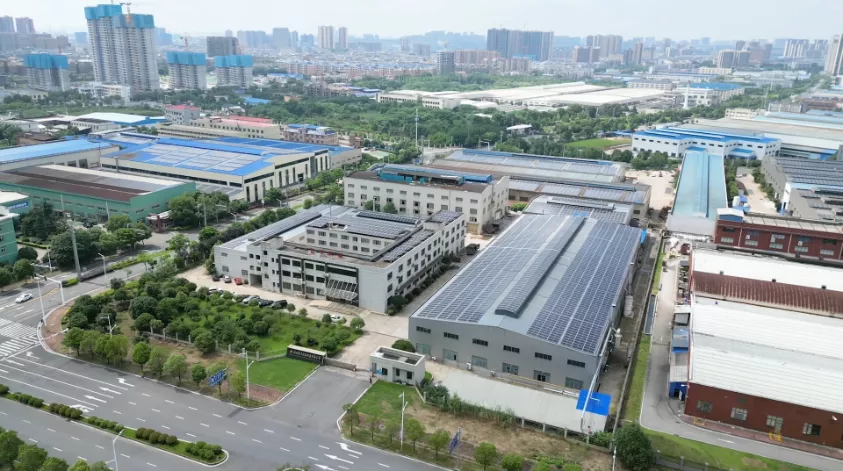Sustainability in Casting: A Guide to CBAM for Suppliers

CBAM for Supplier Casting Procurement Compliance
What is CBAM and Why It Matters?
The Carbon Border Adjustment Mechanism (CBAM) represents a transformative policy aimed at reducing carbon emissions globally. Introduced by the European Union, CBAM ensures that imported goods adhere to the same carbon pricing standards as those produced within the EU. This mechanism addresses the issue of carbon leakage, where companies relocate production to regions with less stringent environmental regulations. By leveling the playing field, CBAM promotes fair competition and encourages sustainable practices across industries.
For casting suppliers, CBAM holds significant importance. It directly impacts procurement processes, requiring suppliers to adopt environmentally conscious practices. Companies must decarbonize their operations by sourcing alternative materials, implementing sustainable production methods, and investing in cleaner technologies. These efforts not only align with CBAM requirements but also enhance long-term competitiveness and resilience in an evolving market.
"Effective supplier engagement has become indispensable under the Carbon Border Adjustment Mechanism (CBAM)." This statement underscores the necessity for casting suppliers to actively participate in sustainability initiatives to meet compliance standards and maintain economic viability.
Key CBAM Requirements for Casting Suppliers
Compliance with CBAM involves several critical requirements for casting suppliers. Accurate primary data collection stands as a cornerstone of this process. Suppliers must provide precise emissions data to importers, ensuring transparency and accountability. By October 2024, companies are expected to engage their supply chains to gather and report this data effectively.
CBAM also imposes reporting obligations on importers. They must submit actual emissions values obtained from suppliers or manufacturers. This necessitates robust collaboration between suppliers and importers to streamline data collection and reporting processes. Additionally, casting suppliers must evaluate their material sourcing strategies. Imports of energy-intensive goods, such as unwrought aluminum and raw steel, fall under CBAM's purview. Suppliers relying on these materials from non-EU countries must assess the potential increase in production costs and adapt accordingly.
To meet these requirements, suppliers should prioritize supply chain efficiency. Investing in digital reporting solutions and fostering strong partnerships within the supply chain can simplify compliance efforts. Proactive decarbonization strategies further enhance readiness for CBAM implementation.
The Impact of CBAM on International Casting Supply Chains
CBAM introduces profound changes to international casting supply chains. By enforcing carbon pricing on imports, it compels suppliers outside the EU to align with stringent environmental standards. This shift increases the complexity of sourcing materials globally, particularly for energy-intensive products. Suppliers must navigate challenges such as higher production costs and stricter documentation requirements.
The mechanism also emphasizes the importance of sustainability in casting procurement. Companies must rethink their processes to balance recycled and primary materials, reducing their environmental footprint. Utilizing byproducts from finishing and reworking castings can further enhance sustainability while minimizing costs.
Moreover, CBAM fosters greater accountability across supply chains. Suppliers must ensure compliance with labor regulations, environmental standards, and carbon neutrality goals. These measures not only meet regulatory demands but also strengthen supplier credibility and customer trust.
Key Takeaways
Understand CBAM: The Carbon Border Adjustment Mechanism is crucial for leveling the playing field in carbon pricing, impacting how casting suppliers operate and source materials.
Prioritize Data Accuracy: Suppliers must collect and report precise emissions data to comply with CBAM, ensuring transparency and accountability in their operations.
Invest in Sustainability: Adopting energy-efficient technologies and incorporating recycled materials can significantly reduce costs and environmental impact, aligning with CBAM requirements.
Enhance Supply Chain Collaboration: Strong partnerships and open communication with stakeholders are essential for streamlining compliance and promoting sustainable practices.
Stay Informed on Regulations: Regularly update your knowledge on CBAM guidelines and engage in training to navigate the complexities of compliance effectively.
Embrace Innovation: Explore new materials and processes that reduce emissions and enhance sustainability, positioning your business competitively in the market.
Act Now for a Greener Future: Implementing CBAM-aligned practices not only meets regulatory demands but also fosters long-term success and resilience in the casting industry.
Overcoming Challenges in CBAM Compliance
Addressing Cost and Resource Constraints
CBAM compliance introduces significant financial and resource challenges for casting suppliers. Companies must allocate substantial resources to gather accurate emissions data, implement sustainable practices, and meet reporting obligations. Suppliers who fail to innovate and reduce embedded emissions risk facing higher production costs and potential market disadvantages. Non-compliance can lead to financial penalties for importers, further emphasizing the need for proactive measures.
To address these constraints, suppliers should focus on optimizing resource allocation. Investing in energy-efficient technologies and adopting a design for sustainability approach can reduce operational costs while meeting CBAM requirements. For instance, implementing solar panels or other renewable energy solutions can significantly lower energy expenses.
Additionally, suppliers can explore partnerships with stakeholders to share resources and expertise. Collaborative efforts can streamline compliance processes, minimize waste reduction challenges, and enhance overall efficiency. By prioritizing sustainable investments, companies can position themselves competitively in the evolving market landscape.
Ensuring Transparency and Accountability in Supply Chains
Transparency and accountability are critical components of CBAM compliance. Suppliers must provide precise emissions data and ensure that their entire supply chain adheres to environmental standards. Importers rely on accurate reporting to avoid penalties, making robust data collection systems indispensable.
To achieve transparency, suppliers should thoroughly map their supply chains. Identifying CBAM goods suppliers and assessing their compliance status ensures alignment with regulations. Digital tools and platforms can simplify data tracking and reporting, fostering greater accountability. Suppliers must also engage in regular audits to verify compliance with environmental responsibility standards, including labor regulations and pollution control measures.
Strengthening partnerships across the supply chain further enhances accountability. Open communication and shared goals promote trust and collaboration among stakeholders. Suppliers who prioritize transparency not only meet regulatory demands but also build credibility and customer loyalty. These efforts align with corporate social responsibility objectives, reinforcing the importance of sustainable practices in the casting industry.
Navigating Regulatory Uncertainty and Complexity
The regulatory landscape surrounding CBAM remains complex and uncertain. Suppliers face challenges in interpreting guidelines, adapting to evolving requirements, and ensuring compliance across diverse markets. This complexity can hinder progress and create confusion within supply chains.
To navigate these challenges, suppliers should adopt a proactive approach. Staying informed about regulatory updates and engaging with industry associations can provide valuable insights. Suppliers must also invest in training programs to educate their teams on CBAM requirements and best practices. Knowledgeable employees can effectively manage compliance efforts and address potential issues.
Moreover, suppliers should embrace flexibility in their operations. Designing processes that accommodate regulatory changes ensures long-term adaptability. For example, balancing recycled and primary materials in production can reduce environmental impact while meeting CBAM standards. Waste reduction strategies, such as utilizing byproducts from casting processes, further enhance sustainability and compliance.
By addressing regulatory uncertainty with strategic planning and innovation, suppliers can overcome obstacles and thrive in the CBAM-driven market. These efforts underscore the importance of environmental responsibility and sustainable procurement in achieving long-term success.
What Small Die Casting Supplier Can Do for Sustainability in Casting Procurement

Implementing Efficient Energy Practices
Adopting Energy-Saving Technologies
Small die casting suppliers can significantly enhance energy efficiency by adopting advanced energy-saving technologies. Modern die casting machines, designed with environmentally friendly features, operate with minimal energy consumption while maintaining high productivity. These machines reduce operational costs and contribute to lower greenhouse gas emissions. For instance, leading manufacturers now offer automatic die casting machines that are non-polluting and highly efficient, making them ideal for sustainable operations. At Hunan Puka, the installation of solar panels generated approximately 652,000 KWH of electricity within six months, showcasing the potential of renewable energy in reducing operational costs.
Improving the efficiency of melting processes also plays a crucial role in reducing energy usage. Foundries can implement energy-efficient solutions to control and minimize energy consumption during production. By optimizing these processes, suppliers not only meet sustainability goals but also achieve cost savings. Such investments in technology demonstrate a commitment to foundry sustainability and align with global environmental standards.
Streamlining Energy Usage in Operations
Streamlining energy usage across operations ensures consistent energy efficiency. Suppliers can evaluate their energy consumption patterns and identify areas for improvement. For example, installing renewable energy systems, such as solar panels, can significantly reduce reliance on non-renewable energy sources.
Additionally, suppliers should focus on designing lightweight yet durable components. Die casting inherently supports this approach by producing robust parts with optimized designs. Lightweight materials not only improve energy efficiency during production but also enhance the overall sustainability of the final product. These practices reflect a proactive approach to reducing energy waste and achieving long-term environmental benefits.
Embracing Sustainable Material Sourcing
Incorporating Recycled Materials
Incorporating recycled materials into production processes is a practical step toward sustainability. Die casting allows for the recycling and reuse of metal alloys, reducing the need for virgin materials. This approach minimizes waste and conserves natural resources, aligning with sustainable design practices. Suppliers can also utilize byproducts from finishing and reworking castings, further enhancing material efficiency.
Recycled materials not only lower production costs but also reduce the environmental footprint of casting operations. By prioritizing the use of recycled inputs, suppliers contribute to sustainable castings that meet both regulatory and customer expectations. This strategy underscores the importance of ethical sourcing in modern manufacturing.
Exploring Environmentally Friendly Alternatives
Exploring environmentally friendly alternatives to traditional materials is essential for advancing sustainability. Suppliers can experiment with innovative casting alloys that offer improved performance and reduced environmental impact. For example, sustainable sand casting processes emphasize the use of recyclable materials, ensuring minimal waste generation.
Suppliers should also consider sourcing raw materials from ethical and responsible suppliers. Ethical sourcing practices ensure compliance with environmental and labor standards, fostering trust among stakeholders. By adopting these measures, small die casting suppliers can position themselves as leaders in sustainable procurement.
Enhancing Collaboration for Sustainability
Strengthening Partnerships Across the Supply Chain
Collaboration across the supply chain is vital for achieving sustainability goals. Suppliers should establish strong partnerships with stakeholders, including customers, manufacturers, and raw material providers. Open communication and shared objectives promote alignment with sustainability standards and streamline compliance efforts.
Digital tools can facilitate data sharing and transparency, enabling suppliers to track and report emissions accurately. Collaborative efforts also help in addressing challenges such as resource constraints and regulatory complexities. By working together, supply chain partners can create a unified approach to sustainable practices.
Promoting Sustainable Practices Among Stakeholders
Promoting sustainable practices among stakeholders ensures collective progress toward environmental goals. Suppliers can engage in knowledge-sharing initiatives, offering training programs and workshops on sustainability. These efforts encourage stakeholders to adopt energy-efficient technologies and sustainable design practices.
Suppliers should also advocate for the adoption of sustainable procurement policies within the industry. Highlighting the benefits of sustainable castings, such as reduced costs and enhanced credibility, motivates stakeholders to prioritize environmental responsibility. By fostering a culture of sustainability, small die casting suppliers can drive meaningful change across the casting industry.
CBAM plays a pivotal role in driving sustainability within casting procurement. By aligning with its objectives, suppliers can reduce their environmental footprint while fostering innovation for long-term success. Engaging suppliers in emissions-reduction initiatives strengthens supply chains and ensures compliance with CBAM reporting obligations. This approach not only enhances operational efficiency but also builds resilience against market challenges.
Adopting CBAM-aligned practices offers significant benefits, including a competitive edge and a reduced environmental footprint. Suppliers must embrace sustainability as a core business strategy to thrive in an evolving market. The time to act is now—prioritize sustainable business practices and lead the industry toward a greener future.
FAQ
What is CBAM, and why does it matter for casting suppliers?
CBAM, or the Carbon Border Adjustment Mechanism, is a policy introduced by the European Union to reduce global carbon emissions. It ensures that imported goods meet the same carbon pricing standards as those produced within the EU. For casting suppliers, CBAM is crucial because it directly impacts procurement processes, requiring compliance with stringent environmental standards. Suppliers must adopt sustainable practices, such as decarbonizing operations and sourcing eco-friendly materials, to remain competitive and avoid penalties.
Which goods fall under CBAM regulations?
CBAM applies to imports of energy-intensive goods at high risk of carbon leakage. These include cement, iron and steel, aluminum, fertilizers, electricity, and hydrogen. For casting suppliers, the regulation also covers specific raw input materials like unwrought aluminum and raw steel. The complete list of goods is classified under the Combined Nomenclature (CN) codes in Annex I of the regulation.
How can suppliers ensure compliance with CBAM reporting requirements?
Suppliers must provide accurate emissions data for each product and production installation. This includes details on the quantity of CBAM goods imported and any equivalent carbon price paid abroad. To streamline compliance, suppliers should invest in digital tools for data collection and reporting. Establishing clear communication channels with importers and conducting regular audits can further ensure accuracy and transparency.
What are the consequences of non-compliance with CBAM?
Non-compliance can lead to significant financial penalties for importers, which may indirectly affect suppliers. Importers rely on supplier-provided data for accurate emissions reporting. If suppliers fail to meet contractual obligations, they risk penalties or even contract termination. Proactive measures, such as training and collaboration, can help suppliers avoid these risks.
How can small die casting suppliers adapt to CBAM requirements?
Small die casting suppliers can focus on energy efficiency and sustainable material sourcing. Adopting energy-saving technologies, such as modern die casting machines, reduces operational costs and emissions. Incorporating recycled materials and exploring environmentally friendly alternatives also align with CBAM standards. Collaboration with stakeholders across the supply chain ensures a unified approach to compliance.
Why is supplier engagement critical under CBAM?
Effective supplier engagement is essential for meeting CBAM requirements. Importers depend on suppliers for accurate emissions data and compliance with environmental standards. Companies that foster strong relationships with suppliers can streamline reporting processes and build resilient supply chains. Structured training programs and open communication further enhance supplier readiness for CBAM.
How can suppliers outside the EU prepare for CBAM?
Non-EU suppliers should familiarize themselves with CBAM regulations and their implications. Early-stage training and information-sharing activities can bridge knowledge gaps. Suppliers can also leverage advanced technologies to meet compliance demands efficiently. By aligning with CBAM requirements, non-EU suppliers can maintain access to the EU market and strengthen their competitive position.
What role does sustainable procurement play in CBAM compliance?
Sustainable procurement minimizes the environmental impact of supply chains while meeting CBAM standards. Suppliers should prioritize sourcing recycled or ethically produced materials. By adopting sustainable procurement practices, companies not only comply with regulations but also enhance their reputation and customer trust.
How can suppliers address the complexity of CBAM regulations?
Suppliers can navigate regulatory complexity by staying informed about updates and engaging with industry associations. Investing in training programs ensures that teams understand CBAM requirements. Flexible operations, such as balancing recycled and primary materials, help suppliers adapt to evolving regulations. Strategic planning and innovation are key to overcoming challenges.
What steps should customs professionals take regarding CBAM compliance?
Customs professionals should educate their clients about CBAM’s impact on costs and business decisions. Advising clients on accurate emissions reporting and compliance strategies helps mitigate risks. Customs professionals can also support clients by fostering proactive communication with suppliers and internal stakeholders, ensuring timely and accurate adherence to CBAM regulations.
See Also
Understanding Functional Testing in CNC and Die Casting
7 Essential Steps to Collaborate with Global Diecast Factories
The Importance of QFD, FMEA, and DOE in Quality Manufacturing
Leading Aluminum Labels in the US, EU, and China
Understanding MOQ and Its Effect on RFQs
About Hunan Puka
Established in 2016 and based in Hunan, China, with a liaison point in Berlin, we are a Tier 2 supplier for the automobile industry. We specialize in the production of customized aluminum die-casting parts designed for machines with a closing force ranging from 280 to 800 tons, with subsequent manufacturing process CNC machining and surface treatment. Our commitment to quality is reflected in our accredited quality management system, certified by ISO9001:2015 and IATF16949:2016 standards.


